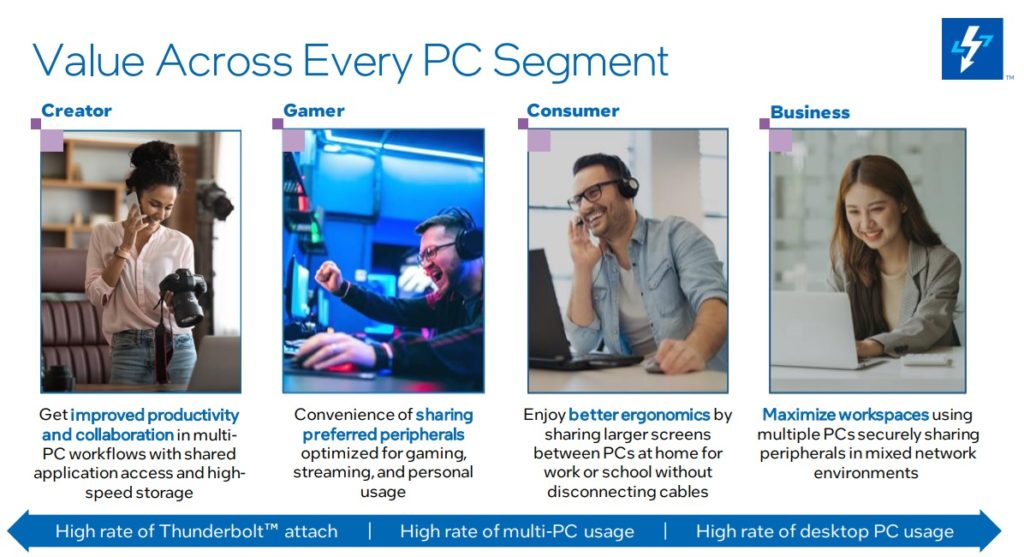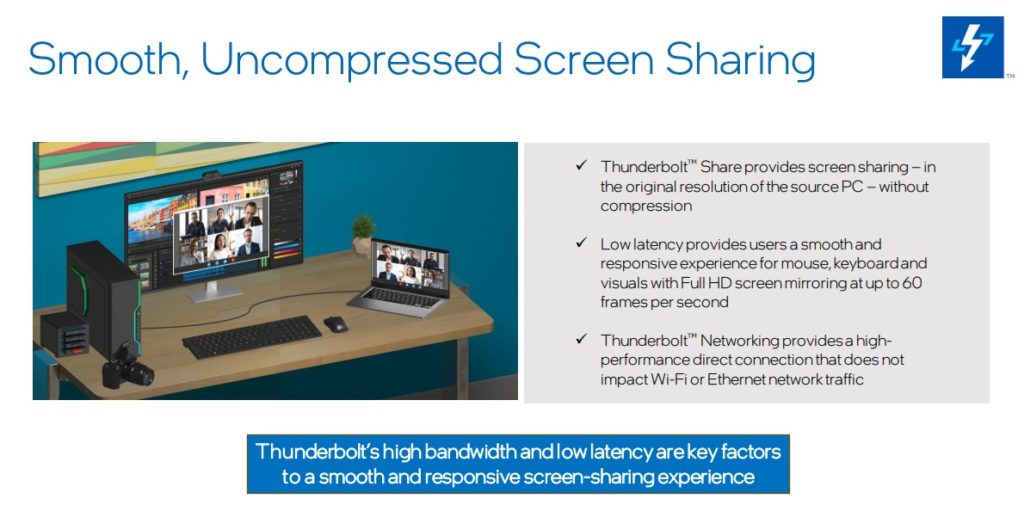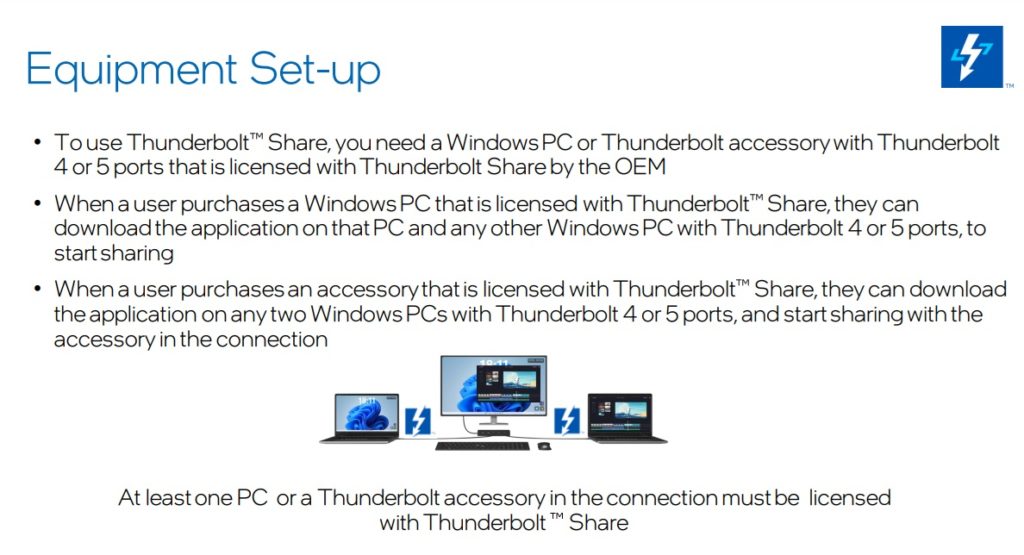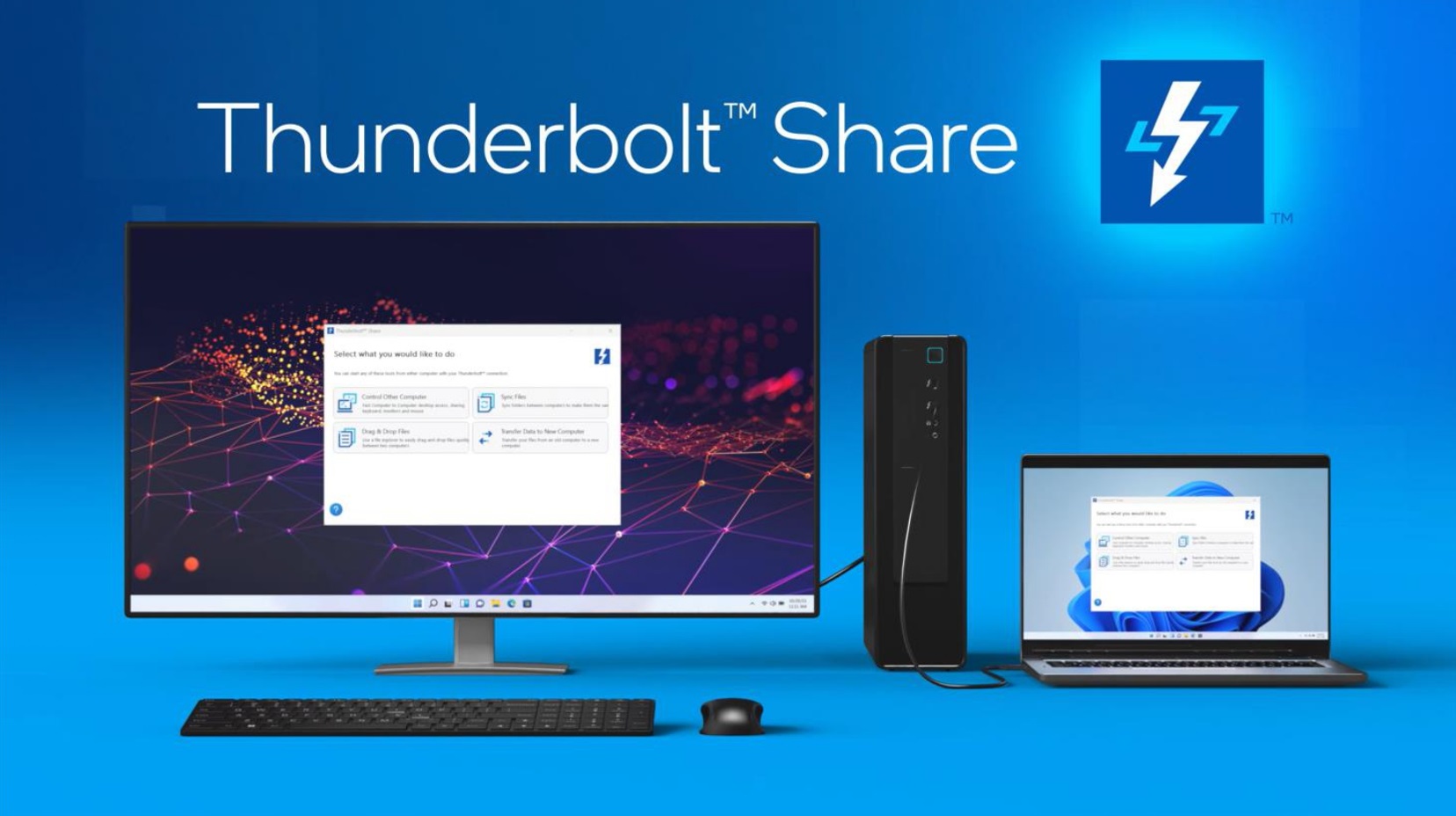Out of nowhere and perhaps a solution to a problem that no one really thought about much, Intel decided to make Thunderbolt much more useful aside from being labeled as a “High-speed file transfer tech for folks who can shell out exorbitant amounts of money” through the new Thunderbolt Share application.
 Similar to how KVM monitors work, Thunderbolt Share connects two Windows PCs (or laptops) together and offers various functions to simplify users’ lives as long as Thunderbolt 4/Thunderbolt 5 is supported.
Similar to how KVM monitors work, Thunderbolt Share connects two Windows PCs (or laptops) together and offers various functions to simplify users’ lives as long as Thunderbolt 4/Thunderbolt 5 is supported.
Once the link is up, those two systems can effectively become one in terms of file synchronization and collaborative tasks, as the high bandwidth and low latency allow files to be moved and updated in seconds. Intel is not abandoning docks, as the same technology can act as the “middleman” between PCs via daisy-chaining and allow both systems to ping, use, and access all the peripherals the docks are currently hosting.
Aside from that, privacy protection is crucial, especially for business devices like laptops used by key personnel so Thunderbolt Share, offers a fast connection without the need for Wi-Fi or cellular, creating a secure, air-gapped environment between the two devices.
While most consumers adopt Thunderbolt for productivity, especially in creative and business sectors, I’m curious if the gaming market will respond as Intel hopes. Personally, I don’t see a widespread need in gaming for this sharing-based app.
 However, the screen sharing function is likely to be the most popular feature after file sharing, as it offers uncompressed signal streams, full HD at 60FPS, and highly responsive mouse and keyboard input.
However, the screen sharing function is likely to be the most popular feature after file sharing, as it offers uncompressed signal streams, full HD at 60FPS, and highly responsive mouse and keyboard input.
This feature is ideal for remote workers who use powerful desktop rigs for personal use but occasionally need to join company calls and meetings. With Thunderbolt Share’s screen sharing, you can simply plug in the cable and get ready in minutes.
 However as expected, the entire “high-speed bridge” requires a software setup that must be downloaded and installed, and the hardware must include TB4 or TB5-certified cables, ports, and optional peripherals. It’s unclear what will happen to existing products, but Intel will likely enforce labeling such as “THUNDERBOLT SHARE COMPATIBLE” or “WITH THUNDERBOLT SHARE” on new products.
However as expected, the entire “high-speed bridge” requires a software setup that must be downloaded and installed, and the hardware must include TB4 or TB5-certified cables, ports, and optional peripherals. It’s unclear what will happen to existing products, but Intel will likely enforce labeling such as “THUNDERBOLT SHARE COMPATIBLE” or “WITH THUNDERBOLT SHARE” on new products.






